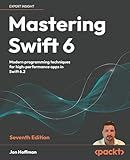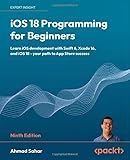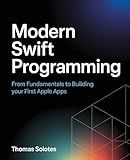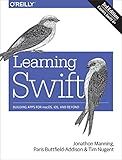Best Swift Programming Books to Buy in December 2025

Mastering Swift 6: Modern programming techniques for high-performance apps in Swift 6.2



iOS 18 Programming for Beginners: Learn iOS development with Swift 6, Xcode 16, and iOS 18 - your path to App Store success



Modern Swift Programming: From Fundamentals to Building Your First Apple Apps



iOS 26 Programming for Beginners: A hands-on guide to kickstarting your iOS app development journey with Swift 6, UIKit, and Xcode 26



Swift Programming: A Detailed Guide to Learning Essential Concepts and Mastering Complex Techniques



Learning Swift: Building Apps for macOS, iOS, and Beyond



Coding iPhone Apps for Kids: A Playful Introduction to Swift



Mastering iOS 18 Development: Take your iOS development experience to the next level with iOS, Xcode, Swift, and SwiftUI


To sort an array in Swift, you can use the sort() or sorted() method. The sort() method sorts the array in place, while the sorted() method returns a new sorted array without modifying the original array. You can sort the array in ascending order by using the < operator inside the sort closure. Alternatively, you can sort the array in descending order by using the > operator. You can also customize the sorting logic by providing a custom sorting closure as a parameter to the sort() or sorted() method.
How to sort an array of dictionaries in Swift?
To sort an array of dictionaries in Swift, you can use the sorted(by:) method. Here's an example that demonstrates how to sort an array of dictionaries by a specific key:
// Sample array of dictionaries var array: [[String: Any]] = [ ["name": "Alice", "age": 25], ["name": "Bob", "age": 30], ["name": "Charlie", "age": 20] ]
// Sort the array of dictionaries by the "name" key array.sort(by: { $0["name"] as! String < $1["name"] as! String })
// Print the sorted array print(array)
In this example, we first define an array of dictionaries with "name" and "age" keys. Then, we use the sort(by:) method with a closure that compares the "name" key of each dictionary to sort the array alphabetically by the names.
You can adjust the closure to sort the array based on different keys or in different orders. Just replace the comparison logic inside the closure accordingly.
What is the difference between an array and a linked list in Swift?
In Swift, an array is a data structure that stores a collection of elements in contiguous memory locations. Elements in an array are accessed using an index, and arrays have a fixed size that is determined when the array is created.
On the other hand, a linked list is a data structure that stores a collection of elements as nodes, where each node contains a data element and a reference to the next node in the list. Linked lists do not require contiguous memory locations, and elements in a linked list can be easily inserted or removed at any position in the list.
Some key differences between arrays and linked lists in Swift include:
- Time complexity: Accessing an element by index in an array has a time complexity of O(1), while accessing an element by position in a linked list has a time complexity of O(n), where n is the number of elements in the list.
- Size flexibility: Arrays have a fixed size that is determined when the array is created, while linked lists can easily grow or shrink in size by adding or removing nodes.
- Memory allocation: Arrays require contiguous memory allocation, while linked lists do not have this requirement.
- Insertion and deletion: Inserting or deleting elements in an array may require shifting elements to accommodate the new element, while in a linked list, inserting or deleting elements can be done in constant time without affecting other elements.
What is unstable sorting in Swift?
Unstable sorting in Swift refers to a sorting algorithm that does not guarantee the preservation of the original order of equal elements in the sorted output. This means that if two elements are considered equal by the comparison function, they may not necessarily retain their original relative position in the sorted array. This can be an issue in certain scenarios where the original order of equal elements needs to be preserved. Some sorting algorithms, such as quicksort, are inherently unstable.
